Anca Ralescu
kNN Classification of Malware Data Dependency Graph Features
Jun 04, 2024Abstract:Feature resolution impacts the ability of classifiers to make explainable inferences when applied to malware classification. We explore classification based on features constructed from data dependency graphs, and present results from k-Nearest Neighbors (kNN) classifiers. Our study demonstrates that classification based on a novel feature representation not only yields high accuracy, but also increases explainability in inference, as features of data dependency are directly representative of program behavior. We present classification results using the Microsoft Kaggle 2015 malware dataset which was processed with a novel approach to feature extraction and representation. We show that non-parametric approaches to classification in the metric space are able to obtain classification accuracy of 87.5\% when applied to multi-class classification in the Kaggle malware dataset. Additionally, similarity in the metric space can be calculated directly without prior training. Our results provide evidence that data dependency graphs accurately capture both semantic and structural information.
On the ability of CNNs to extract color invariant intensity based features for image classification
Jul 13, 2023Abstract:Convolutional neural networks (CNNs) have demonstrated remarkable success in vision-related tasks. However, their susceptibility to failing when inputs deviate from the training distribution is well-documented. Recent studies suggest that CNNs exhibit a bias toward texture instead of object shape in image classification tasks, and that background information may affect predictions. This paper investigates the ability of CNNs to adapt to different color distributions in an image while maintaining context and background. The results of our experiments on modified MNIST and FashionMNIST data demonstrate that changes in color can substantially affect classification accuracy. The paper explores the effects of various regularization techniques on generalization error across datasets and proposes a minor architectural modification utilizing the dropout regularization in a novel way that enhances model reliance on color-invariant intensity-based features for improved classification accuracy. Overall, this work contributes to ongoing efforts to understand the limitations and challenges of CNNs in image classification tasks and offers potential solutions to enhance their performance.
Semantic Segmentation of Porosity in 4D Spatio-Temporal X-ray μCT of Titanium Coated Ni wires using Deep Learning
Jun 24, 2023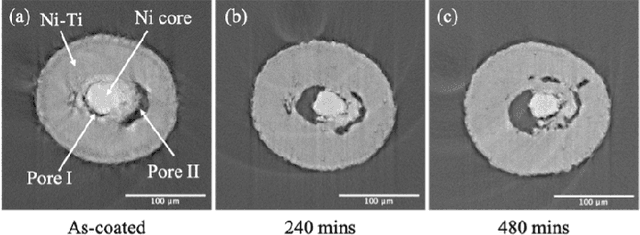
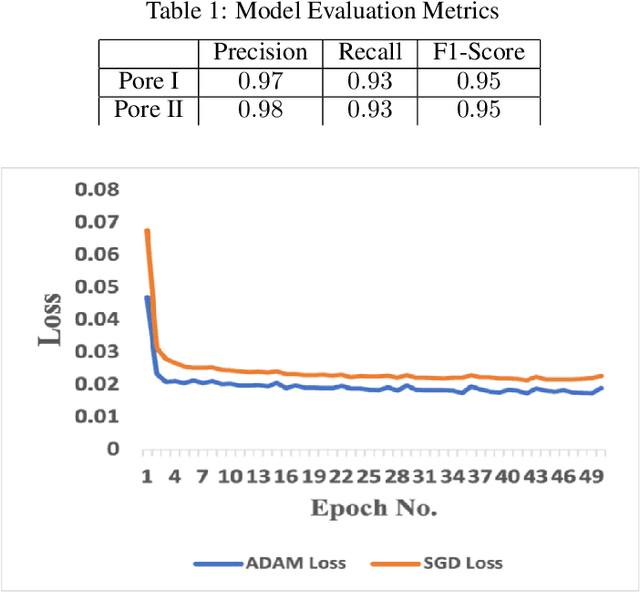
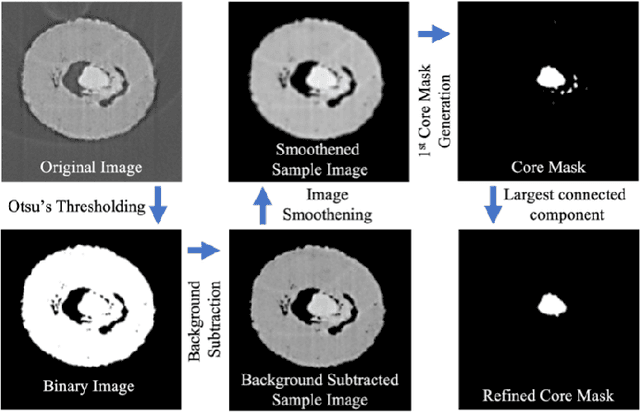
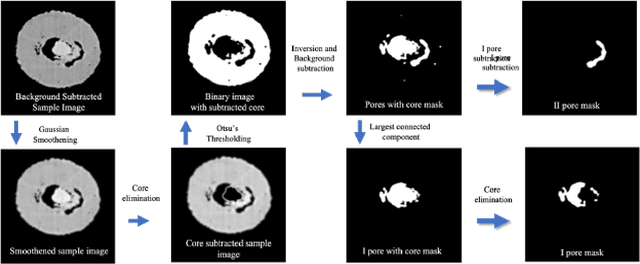
Abstract:A fully convolutional neural network was used to measure the evolution of the volume fraction of two different Kirkendall pores during the homogenization of Ti coated Ni wires. Traditional methods like Otsus thresholding and the largest connected component analysis were used to obtain the masks for training the segmentation model. Once trained, the model was used to semantically segment the two types of pores at different stages in their evolution. Masks of the pores predicted by the network were then used to measure the volume fraction of porosity at 0 mins, 240 mins, and 480 mins of homogenization. The model predicted an increase in porosity for one type of pore and a decrease in porosity for another type of pore due to pore sintering, and it achieved an F1 Score of 0.95.
Learning Generalized Hybrid Proximity Representation for Image Recognition
Jan 31, 2023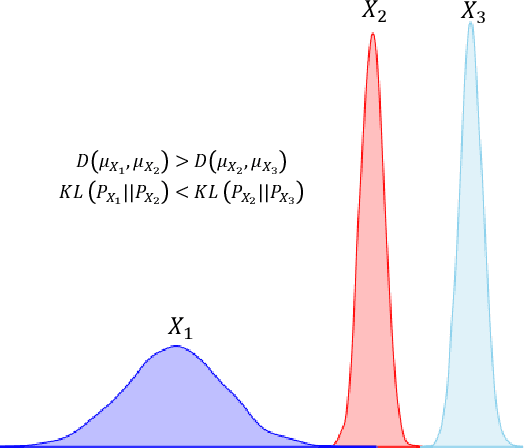
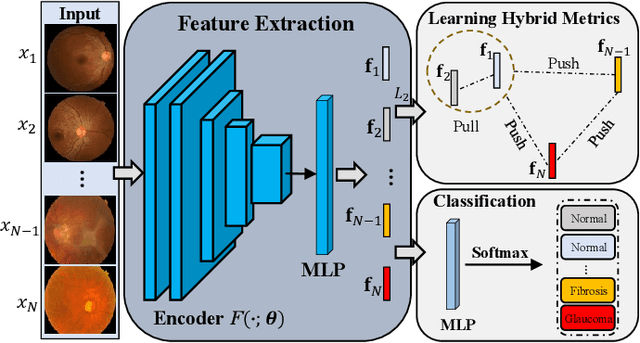
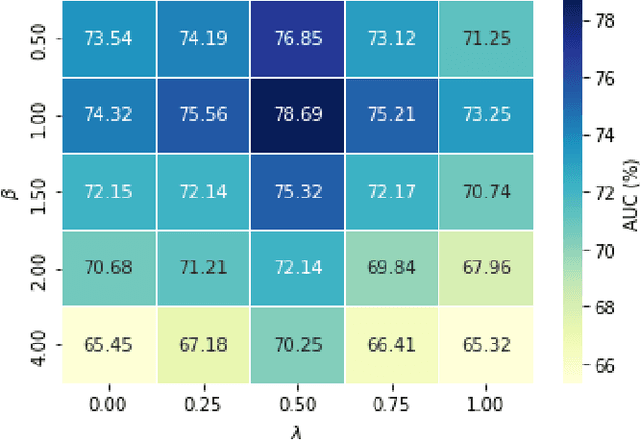
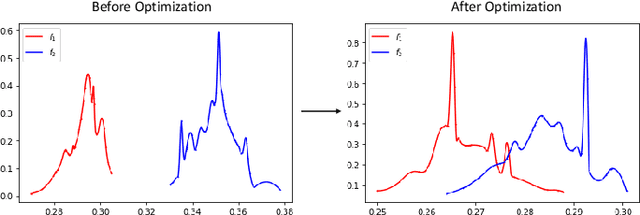
Abstract:Recently, deep metric learning techniques received attention, as the learned distance representations are useful to capture the similarity relationship among samples and further improve the performance of various of supervised or unsupervised learning tasks. We propose a novel supervised metric learning method that can learn the distance metrics in both geometric and probabilistic space for image recognition. In contrast to the previous metric learning methods which usually focus on learning the distance metrics in Euclidean space, our proposed method is able to learn better distance representation in a hybrid approach. To achieve this, we proposed a Generalized Hybrid Metric Loss (GHM-Loss) to learn the general hybrid proximity features from the image data by controlling the trade-off between geometric proximity and probabilistic proximity. To evaluate the effectiveness of our method, we first provide theoretical derivations and proofs of the proposed loss function, then we perform extensive experiments on two public datasets to show the advantage of our method compared to other state-of-the-art metric learning methods.
A Novel Feature Representation for Malware Classification
Oct 18, 2022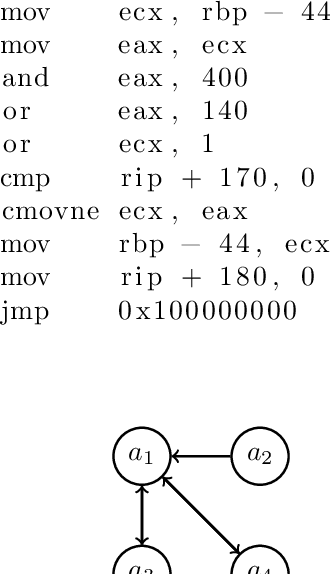
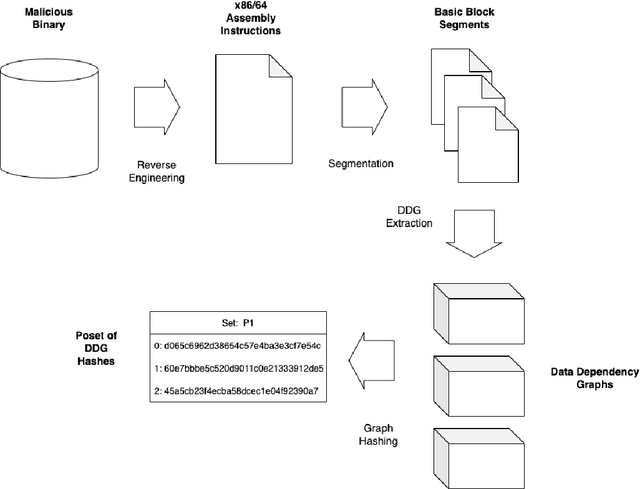
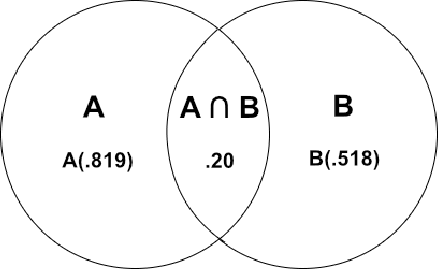
Abstract:In this study we have presented a novel feature representation for malicious programs that can be used for malware classification. We have shown how to construct the features in a bottom-up approach, and analyzed the overlap of malicious and benign programs in terms of their components. We have shown that our method of analysis offers an increase in feature resolution that is descriptive of data movement in comparison to tf-idf features.
On the Combinality of Evidence in the Dempster-Shafer Theory
Mar 27, 2013Abstract:In the current versions of the Dempster-Shafer theory, the only essential restriction on the validity of the rule of combination is that the sources of evidence must be statistically independent. Under this assumption, it is permissible to apply the Dempster-Shafer rule to two or mere distinct probability distributions.
 Add to Chrome
Add to Chrome Add to Firefox
Add to Firefox Add to Edge
Add to Edge